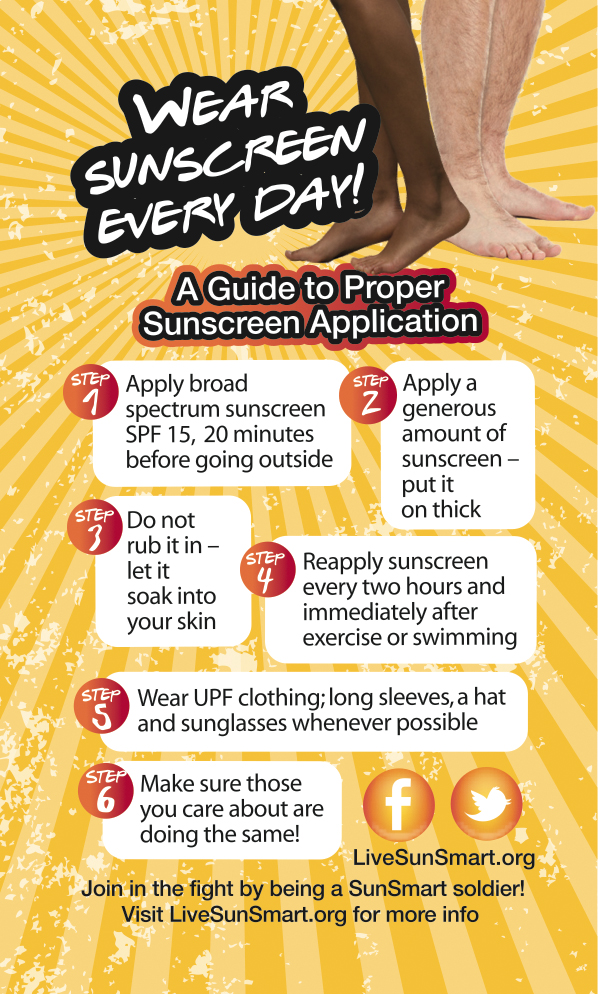Run SunSmart
Running is fun and a healthy activity which mostly occurs outside during the day and therefore you are exposing yourself to sun rays or Ultraviolet radiation (UV). Exposure to UV rays is a major environmental risk factor in the development of skin cancers.
The Live SunSmart Foundation encourages an active outdoor lifestyle, but wants to be sure that you are practicing the proper sun safe precautions when doing so. To Run SunSmart you should:
- Wear Sunscreen – a must for everyone and applied to all exposed skin. Don’t forget the back of your neck, ears and back of the legs (these are the most often skipped areas)
- Apply SPF15 broad spectrum sunscreen properly – what does that mean?

- Wear a hat – the wider the brim the better and a visor doesn’t protect the skin on the top of your head.
- Wear sports sunglasses with broad spectrum lenses (UVA & UVB protection) – think of sunglasses as sunscreen for your eyes
Running is both your skin's best friend (that rosy sheen) and its worst enemy (sun damage). UV damages collagen and destroys Vitamin A in the skin which can accelerate the aging process. Since you're not going to hang up your running shoes as a skin-saving strategy, take these steps to keep your epidermis safe, healthy, and well cared for.
Live SunSmart
A scary, but not entirely surprising, 2006 Archives of Dermatology study found marathoners may be at increased risk of malignant melanoma. Sure, you could run after dark or indoors to avoid frequent, unprotected sun exposure. But that's both impractical and not much fun. Better to be consistent about applying sunscreen to vulnerable areas, says Elizabeth K. Hale, M.D., an associate professor of dermatology at New York University School of Medicine and a marathoner. "I see a lot of runners with squamous-cell carcinoma, a form of skin cancer that typically occurs on chronically exposed areas like the hands, neck, and ear tips," she says.
Protect Yourself
Find—and diligently use—sunscreen that works for you. (Those marathoners in the study? Only about half of them reported using sunscreen regularly.) Look for a lightweight, oil-free, broad-spectrum (blocking both UVA and UVB rays) SPF15 product. A stick is good for your face, as it is less likely to drip and sting your eyes. A good trick to prevent the product from dripping into your eyes is to smear Vaseline above your eyebrows to create a barrier that redirect the sunscreen-laced perspiration to avoid your eyes. A hat and sunglasses add extra protection, as do commonsense measures like wearing UPF clothing (check labels for an Ultraviolet Protection Factor rating).
Source: excerpts from Runners World By Denise Schipani; Published May 3, 2012
